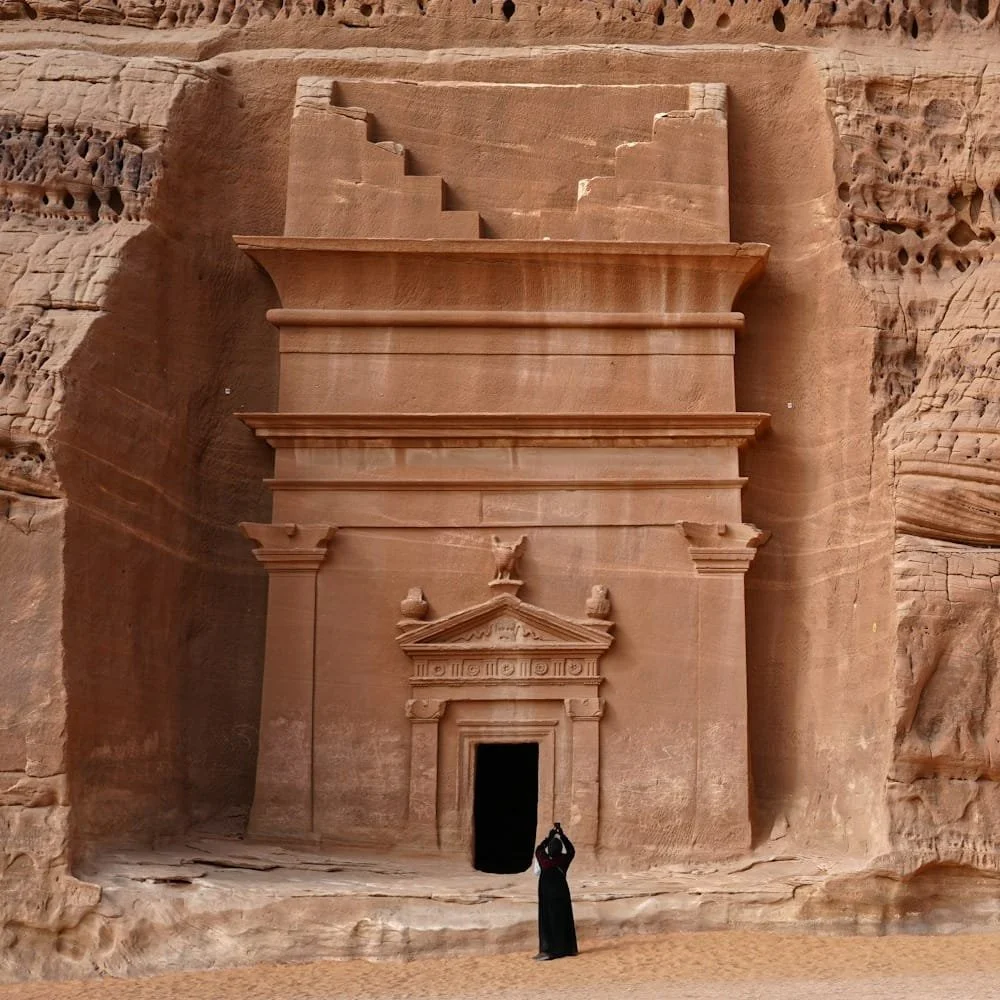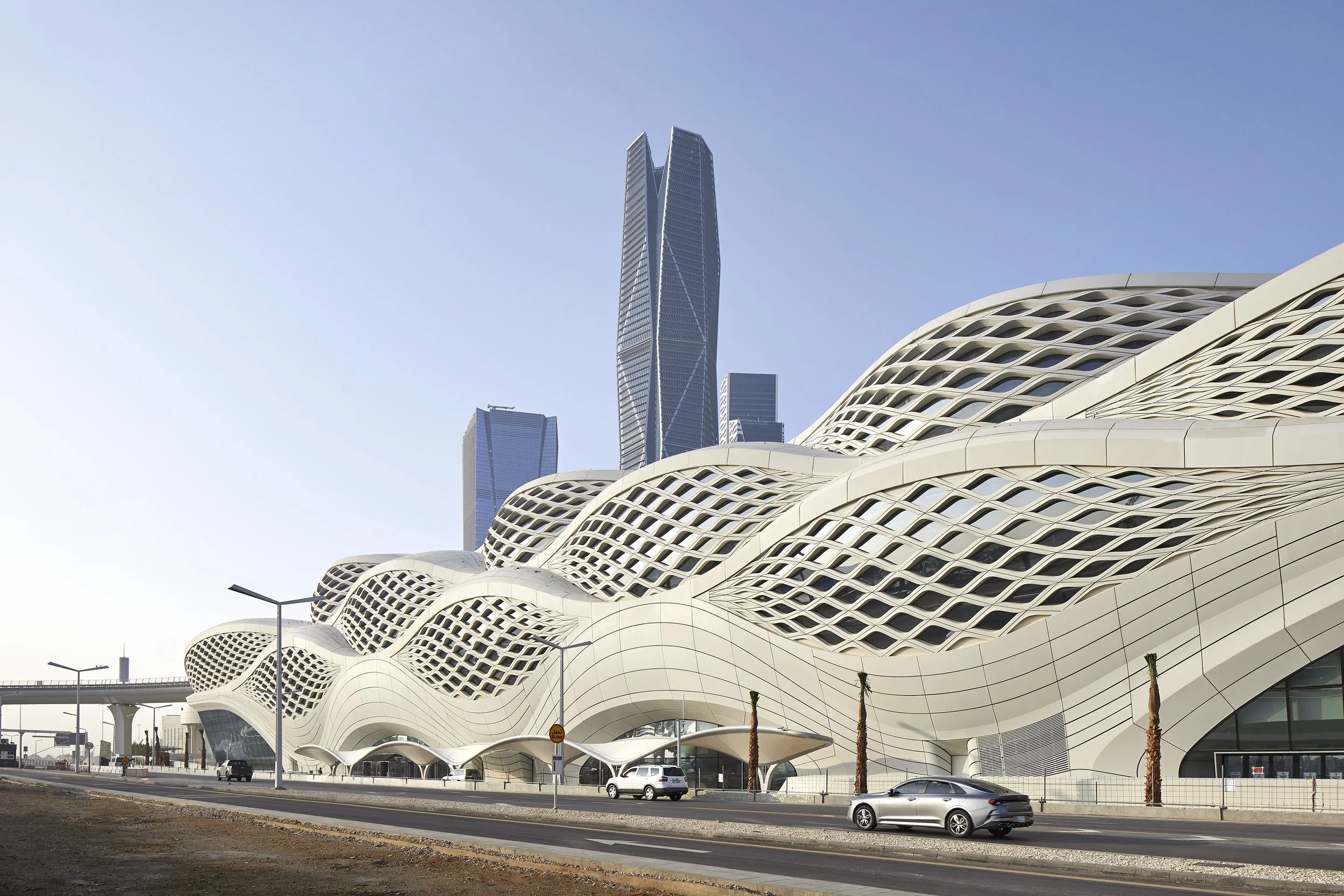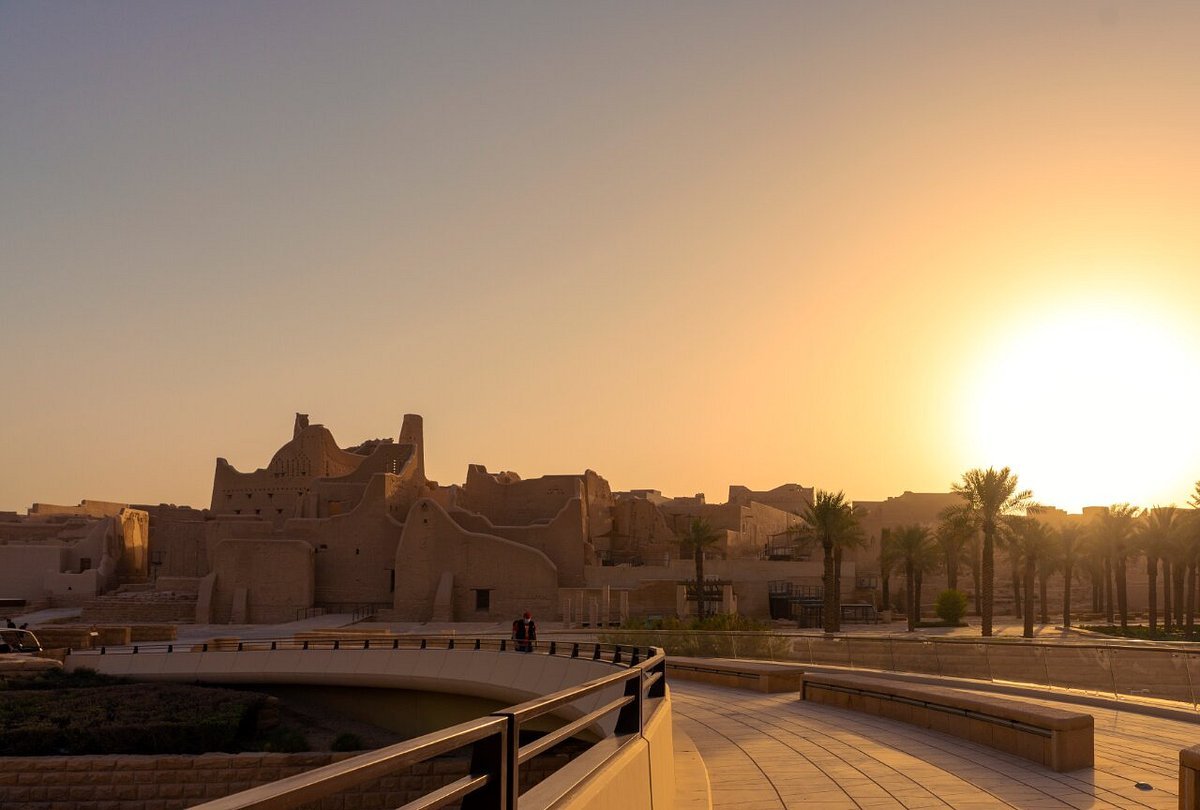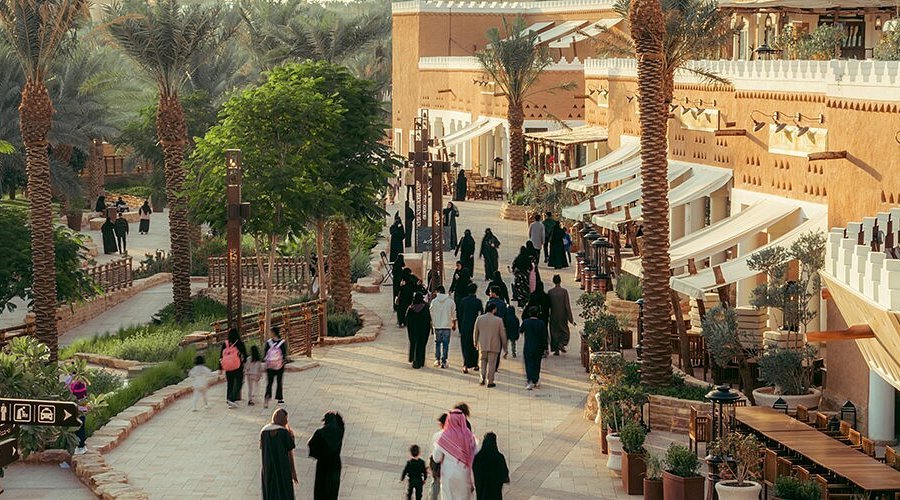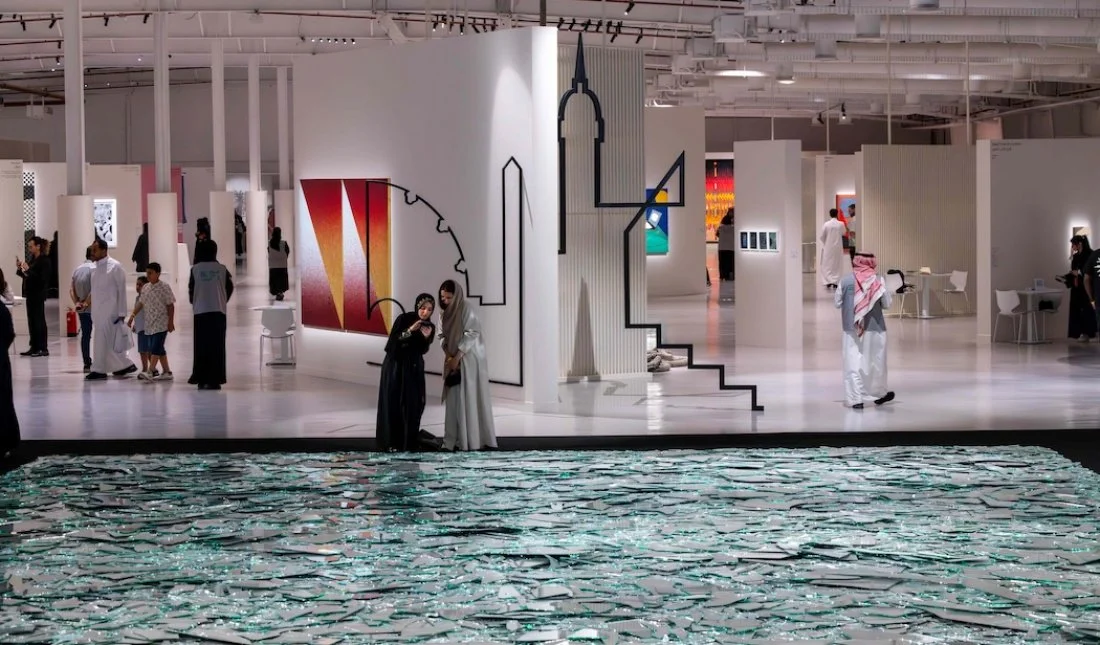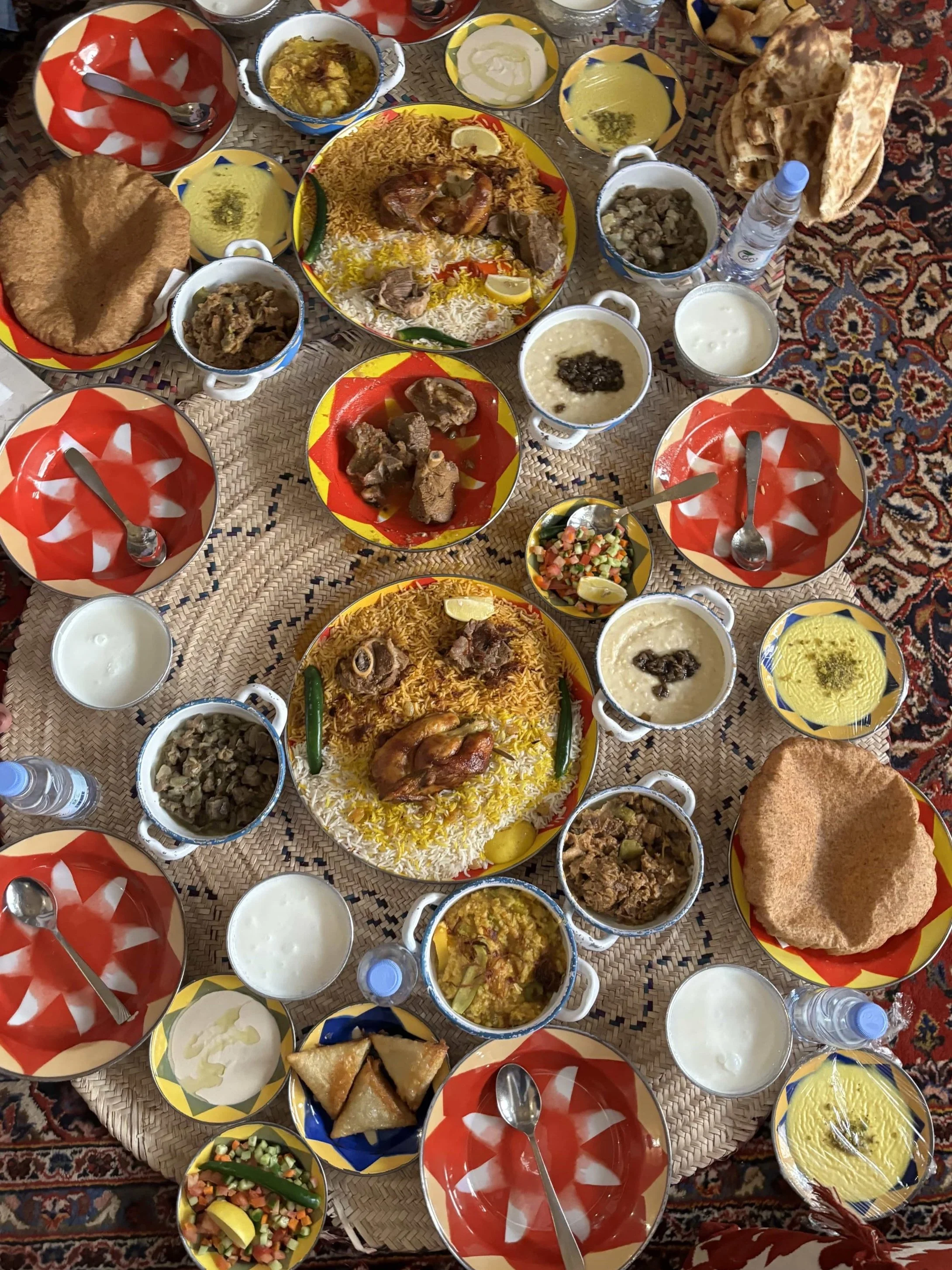Paving The Way
In 2023, Saudi Arabia exceeded its own goal of attracting 100 million visitors by the year 2030, but the work to position the country as a number-one destination for travel, culture and the arts is far from done, with many more ambitious projects underway. Let’s scope out the landscape?
“Have you seen the new train station?" our guide asks as we pile into the minivan midway through our tour of Riyadh. Our blank expressions give him the answer he needs, and in one quick instruction to the driver, we begin heading towards the King Abdullah Financial District (KAFD) in Al Ageeq to find a station beyond the realms of architectural imagination, especially to those with London-shaped expectations. Certainly, no revamped TFL station or the excitement of the once-new Elizabeth Line could begin to compare. Inspired by sand dunes and the traditional mashrabiya windows common in Islamic architecture, KAFD Metro Station, a monolithic white structure with an undulating lattice façade, is a thing of beauty, bearing all the visionary hallmarks of the late, great Zaha Hadid - for it was her architectural firm behind its creation. Our guide beams with pride as we admire it, explaining it is one of four main stations to have opened as recently as November 2024, connecting 81 other stations and six lines in total. The metro system is just one of many fast-track ventures to implement connectivity and convenience in a quickly developing city. It's also one of the initiatives in the Vision 2030 edict launched by the Saudi government in 2016, focusing on promoting a vibrant society via social infrastructure, and bolstering a thriving economy that is attractive and prosperous for both local and international investment.
Shiny new buildings are not hard to come by in Riyadh. The aforementioned KAFD, right behind the station, spans 16 square kilometres and is a futuristic playground of ultramodern architecture comprising 95 tower blocks (the highest being the 80-storey PIF tower) filled with offices and retail and dining spaces. From the conference centre to the Grand Mosque, each building is as striking as the next. And 93 per cent of the site can be accessed via interconnecting tunnels, so during summer it can be traversed indoors without having to endure the oppressive heat.
Earlier that day, in the desert oasis of Diriyah on the northern outskirts of Riyadh, we'd begun our tour from the Marriott Bab Samhan hotel (the first five-star hotel in the area). In stark contrast to the KAFD, we stroll amid low traditional honey-hued Najdi mud-brick buildings, enjoying the opportunity to explore the area where the Kingdom of Saudi Arabia began.
At the resort-like Bujairi Terrace, a series of intermingling pathways nestling among palm groves, we peruse the luxury boutiques and have our pick of places to enjoy breakfast. The Terrace opened just five years ago, and the sun-soaked spot houses a growing number of high-end restaurants serving both local and international flavours - options range from the locals' favourites, Somewhere Café and Maiz, to an outpost of the Parisian Angelina and an Assouline Café. We eventually settle in Maiz, enticed by the aroma of freshly baked flatbread made in the restaurant's huge bread oven.
The Terrace is another leap in development under Vision 2030. Carefully managed by the Diriyah Gate Development Authority, with a predicted total cost of $63bn, it is designed to protect and preserve the birthplace of the Saudi dynasty while transforming it into a premium destination - and as such, feels like a tussle between old and new. Within plans to elevate this walkable city, there will be 40 more hotels, 100 new souks, 26 cultural attractions, new art galleries, a Champs- Elysées-style boulevard and underground parking for 10,500 cars. And the project also includes safeguarding the At-Turaif district that borders Bujairi Terrace - one of six UNESCO sites in the country, this is a place where visitors can wander the cobbled lanes of the Salma Palace and explore original Najdi architecture and geology, getting a feel for a home that once belonged to royal lineage.
Another of Saudi's 2030 targets is the growth of its art and culture scene. In April, Riyadh hosted its inaugural Art Week, which took place in the JAX District and included 45 galleries, including the Saudi Arabia Museum of Contemporary Art (SAMoCA), the Royal Institute of Traditional Arts and other studios used by leading local artists. The debut event was designed to amplify the art scene while showcasing its diversity. And with dynamic young companies like MDLeast holding annual music festivals, the appetite for a stronger music scene is on the rise too - its first event, in 2019, attracted an impressive 400,000 visitors.
Curiously, many parts of Riyadh remain as yet untouched, like the Souk Al-Zal, one of the oldest markets in the city, where you can breathe in the fragrant scent of burning agarwood oud chips while browsing the small shopfronts selling abayas, carpets and other textiles on repeat. And souvenir magpies and those pressed for time shouldn't discount a quick stop at Kingdom Heritage. The shop's comically unmissable entrance is flanked by two ginormous wooden camels, and you'd be forgiven for thinking it was a tourist trap, but inside is a treasure trove of items ranging from the seriously kitsch to the genuinely antique. Yes, there are obvious camel-themed knick-knacks, but also enamel teapots, traditional earthenware, musical instruments, and wood carvings, jewellery and textiles made by local artisans.
Similarly, the Najd Village restaurant might have been an obvious choice for food on the tourist trail, but what it offered in terms of authentic Saudi dining made it worth the visit. In its traditional-style mud-brick building, diners can retreat from the sunshine into the cool foyer and enjoy ultra-strong Arabic coffees and dates on the Bedouin carpet, before being seated amid locals and visitors in the main restaurant. Our guide took us on a tour of Najdi cuisine via a sofra banquet, which typically involves two types of rice, stewed lamb and chicken kabsan (grilled chicken), a porridge-like dish made of crushed wholewheat in milk called jareesh, dense, flat dumplings in meat stew known as matazeez, flatbreads, pickles and salad. The order for two could easily have fed four or five, and as we feasted, we were told that dining together is the best way to experience local hospitality, as Saudis believe that to have friends to eat with is a blessing. It's why entertaining is taken rather seriously and can last many hours - both at home and in restaurants.
Our tour culminates 300m up on the Sky Bridge at the top of the Kingdom Center - the sloped glass-walled platform is the only tourist spot that offers vistas of the entire city. And it's here that we stop and take stock of one of the world's fastest-growing economies: a sprawling metropolis of state-of-the-art architecture rising up amid 600 years of Najdi heritage. Countless cranes and construction sites litter the landscape - the labours of which have provided the soundtrack to much of our visit. It's this juxtaposition of traditional and futuristic that makes a visit to Saudi's capital and beyond so intriguing. Will what we see before us today appear the same in 2030? Almost certainly not, but one thing's for sure: it's definitely a space worth watching.
This trip may be fictional, but we could share a very real adventure together. Interested? Don’t be shy… After all, we only live once… Get in touch :)
